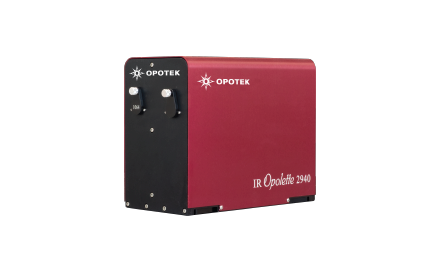Overview
Opolette 2940
Water is the primary component of biological samples relevant to life sciences. With the Opolette 2940, a micro-sized cross-section can be desorbed while keeping sample constituents intact. Ionization can occur directly or through the addition of a secondary ionization source, followed by mass spectrometric analysis. The OpoletteTM 2940 is designed for custom or commercial ion source integration. An SDK is available to integrate laser functions into instrument software. The laser can be factory tuned to other absorption peaks between 2600 and 3450 nm.
Product Features
- Light-weight, ultra-compact fixed wavelength laser system
- Integrated pump laser with quick connect cables
- End-user replaceable flashlamp (50 million shot lifetime) and DI cartridge
- Alignment verification
- Integrated alignment diode laser for OPO beam path identification
- Flashlamp and/or Q-Switch external triggering
- Access to residual beams
- WARRANTY: One year on the entire system. Includes all options except fibers.
Product Options
- Protective Hard Shell Cases (PHSC)
Includes two protective hard cases with custom foam padding. - External Motorized Variable Attenuator (eMVA)
End-user installable/removable. Reduces max OPO by 10-15% when installed. Computer controlled. Can only be used with visible and near-infrared wavelengths. - Fiber Delivery Kit (FD)
Can be optimized for either ultra-violet (UV), visible (VIS), or near-infrared (NIR) tuning ranges.
Externally mounted fiber delivery kit includes mounts, coupling lens and fiber. Fiber specifications: 2.5 m long, 1 mm diameter core, NA = 0.22 - Harmonic Generation (HG)
355 nm generated from residual 1064 nm. - Extended Warranty (EXW)
Extends full system warranty for one additional year, for a total of two years. Includes all options except for fibers.

